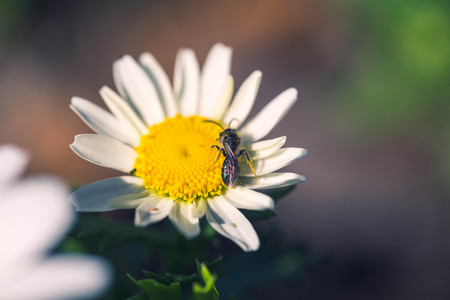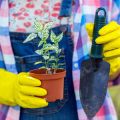1. Understanding the Importance of Pollinators
When creating a pollinator-friendly garden during the summer months, its important to understand why pollinators are so essential. Pollinators like bees, butterflies, and hummingbirds play a critical role in both natural ecosystems and our local food supply. Without them, many of the fruits, vegetables, and flowers we enjoy simply wouldn’t exist.
Why Pollinators Matter
Pollinators help plants reproduce by transferring pollen from one flower to another. This process leads to the production of seeds and fruit. In fact, over 75% of flowering plants rely on pollinators to some degree. In agriculture, this means better crop yields and healthier produce.
Common Summer Pollinators in the U.S.
| Pollinator | Description | What They Pollinate |
|---|---|---|
| Bees (Honeybees & Native Bees) | Vital for many crops; active all summer long | Fruits, vegetables, herbs, wildflowers |
| Butterflies | Attracted to colorful flowers; daytime feeders | Milkweed, lavender, zinnias |
| Hummingbirds | Fast-moving birds that love nectar-rich blooms | Trumpet vine, bee balm, salvia |
The Connection to Local Agriculture
In the U.S., farmers depend on pollinators for crops like apples, almonds, blueberries, and cucumbers. Without healthy pollinator populations, these crops could suffer lower yields or require expensive manual pollination. By supporting pollinators in your home garden, youre also helping support local farms and food systems.
A Step Toward a Healthier Environment
Creating a pollinator-friendly garden isn’t just about pretty flowers—its about building a more sustainable environment. When you provide food sources and shelter for pollinators during the hot summer months, you help maintain biodiversity and balance in nature.
This foundational understanding will guide the choices you make as you design your summer garden to be a haven for pollinators.
2. Choosing Native Plants for Maximum Impact
When planning your pollinator-friendly garden during the summer months, one of the most effective steps you can take is choosing native plants. These plants have evolved to thrive in your local climate and soil conditions, making them easier to care for and more beneficial to local pollinators like bees, butterflies, and hummingbirds.
Why Native Plants Matter
Native plants are adapted to your region’s weather patterns and support the specific needs of local pollinators. Because pollinators and native plants have developed together over time, native species often provide better nectar and pollen sources than non-native varieties. Additionally, they typically require less water and fewer chemicals, making your garden more sustainable.
Benefits of Native Plants
- Support local bee and butterfly populations
- Require less maintenance once established
- Resist local pests and diseases
- Conserve water due to natural drought resistance
Examples of Native Plants by U.S. Region
Here’s a quick guide to some popular native plants across different regions in the United States:
| Region | Native Flowers | Native Shrubs | Native Trees |
|---|---|---|---|
| Northeast | Bee Balm, Black-eyed Susan | Shrubby St. John’s Wort | Eastern Redbud |
| Southeast | Coreopsis, Purple Coneflower | Buttonbush | Sourwood Tree |
| Midwest | Milkweed, Wild Bergamot | New Jersey Tea | Bur Oak |
| Southwest | Purple Prairie Clover, Desert Marigold | Brittlebush | Mesa Palo Verde |
| West Coast | California Poppy, Yarrow | Coyote Brush | Western Redbud |
Tip:
You can find out which plants are native to your area by checking with local extension services or visiting a native plant nursery.
Caring for Native Plants in Summer
Once planted, native species usually need less attention than exotic varieties, but it’s still important to water them during dry spells until they’re fully established. Mulching around the base can help retain moisture and reduce weed competition.
Create Layers with Variety
A mix of flowers, shrubs, and trees offers shelter and food sources at different heights, attracting a wider range of pollinators. Try to select plants that bloom at different times throughout the summer so pollinators always have something in bloom to enjoy.
Selecting the right native plants not only makes gardening easier but also turns your outdoor space into a thriving haven for pollinators all summer long.

3. Creating Habitat and Shelter for Pollinators
During the hot summer months, pollinators like bees, butterflies, and other beneficial insects need more than just nectar-rich flowers—they also need safe places to rest, nest, and take shelter from the heat. Providing natural habitats in your garden can make a big difference in supporting these essential creatures.
Use Natural Materials for Nesting
Many native bees are solitary and prefer nesting in small holes or burrows rather than hives. You can help by leaving some areas of bare soil undisturbed or placing bundles of hollow stems (like bamboo or reeds) around your garden. These materials mimic the natural environments where pollinators would typically build their homes.
Examples of Natural Nesting Materials:
| Material | Best For | Placement Tips |
|---|---|---|
| Bamboo canes | Solitary bees | Cut into 6-inch pieces and bundle together in a dry area |
| Hollow plant stems | Mason bees | Place horizontally in sunny spots protected from rain |
| Dead wood logs | Carpenter bees, beetles | Leave in shaded corners of the yard undisturbed |
Add a Bee Hotel
Bee hotels are an easy DIY project that provide a home for solitary bees. These structures are usually made from wood and filled with drilled holes or packed with natural tubes. Hang them on a fence or wall that gets morning sun to keep the residents warm and active throughout the day.
Quick Tips for Installing a Bee Hotel:
- Place at least 3 feet off the ground
- Face east or southeast for morning sunlight exposure
- Avoid areas with heavy pesticide use nearby
- Clean or replace materials annually to prevent disease buildup
Create Undisturbed Zones in Your Garden
Sometimes, doing less is more. Leaving patches of your garden wild and untouched provides excellent habitat for ground-nesting bees and other insects. Avoid tilling every inch of soil and let some native grasses or flowering weeds grow naturally.
Ideas for Low-Maintenance Habitat Zones:
- Leave a corner of your yard unmowed during summer
- Create brush piles using twigs and leaves as shelter zones
- Avoid clearing fallen logs or rocks where pollinators may hide from heat or predators
- Allow native plants to reseed and spread naturally over time
By combining natural materials, bee hotels, and undisturbed spaces, you’ll create a welcoming environment where pollinators can thrive all summer long.
4. Maintaining a Safe and Organic Garden Environment
Creating a pollinator-friendly garden isn’t just about planting the right flowers—it’s also about keeping your garden safe for bees, butterflies, and other helpful insects. During the summer months, its especially important to reduce the use of harmful chemicals and focus on organic gardening practices that support pollinators health and keep them coming back.
Why Avoid Chemicals?
Many pesticides, herbicides, and fungicides contain ingredients that are toxic to pollinators. Even small amounts can be harmful, especially when applied during bloom time when bees are most active. Avoiding synthetic chemicals helps protect both the pollinators and the overall health of your garden.
Natural Alternatives to Chemical Pesticides
Try using natural pest control methods to protect your plants while keeping your garden safe for pollinators. Here are some common organic solutions:
| Pest Problem | Organic Solution |
|---|---|
| Aphids | Spray with a mix of water and mild dish soap or release ladybugs as natural predators |
| Caterpillars | Handpick or use Bacillus thuringiensis (Bt), a natural soil bacterium safe for bees |
| Mildew or Fungus | Baking soda spray mixed with water and a bit of vegetable oil |
| Sucking Insects (like whiteflies) | Neem oil sprayed in early morning or late evening when pollinators are less active |
Create a Healthy Ecosystem
A diverse garden is a healthy one. Mixing different plant types can naturally deter pests and attract beneficial insects like ladybugs, lacewings, and predatory beetles that help control pest populations without harming pollinators.
Add Companion Plants
Certain plants can boost each other’s growth and repel pests. For example:
- Basil + Tomatoes: Basil helps repel insects that commonly affect tomatoes.
- Nasturtiums + Cucumbers: Nasturtiums act as a trap crop for aphids.
- Dill + Lettuce: Dill attracts beneficial insects that eat lettuce pests.
Avoid Spraying During Pollinator Activity Times
If you must apply any treatment—even organic ones—do so early in the morning or late in the evening when bees and butterflies are less active. This reduces direct contact and keeps them safe while still allowing you to manage pests effectively.
Create Shelter and Water Sources Without Chemicals
A safe garden also includes clean water sources and shelter for pollinators. Use shallow dishes filled with fresh water and add pebbles so insects can land safely. Be sure these areas stay free of chemical runoff from lawns or neighboring properties.
Your Summer Garden Checklist for Organic Practices:
- Avoid synthetic pesticides, herbicides, and fungicides.
- Select native plants that thrive without chemical help.
- Add compost or organic mulch instead of chemical fertilizers.
- Create homes for pollinators using untreated wood or natural materials.
- Cultivate biodiversity with companion planting.
An organic approach not only protects pollinators but also improves soil health, boosts plant resilience, and creates a more vibrant summer garden full of life and color. Small changes can make a big difference when it comes to keeping pollinators healthy all season long.
5. Watering Wisely and Providing Hydration Stations
During the hot summer months, pollinators like bees, butterflies, and hummingbirds need more than just nectar—they also need water to stay cool and hydrated. Creating a garden that supports these helpful creatures means thinking beyond flowers and into how you manage moisture in your space.
Offer Shallow Water Sources
Pollinators can’t drink from deep water sources like birdbaths without risking drowning. Instead, provide shallow water with safe landing spots. You can use simple household items to create hydration stations:
| Item | How to Use |
|---|---|
| Shallow Dish or Plate | Fill with water and add pebbles so insects can land safely |
| Saucer from Flower Pot | Place under shade and refill daily to keep clean |
| Old Pie Pan or Baking Dish | Add small rocks or twigs as perches for pollinators |
Make sure to clean these water sources regularly to prevent mosquito breeding and algae buildup. Refill them often—especially during dry spells.
Create Mud Puddles for Butterflies
Butterflies get important minerals through a behavior called “puddling.” Create a mud puddle by mixing soil with water in a shady area of your garden. Add flat stones where butterflies can perch while drinking.
Adjust Your Irrigation Schedule
Watering at the right times helps plants thrive and reduces stress on pollinators. Heres a quick guide:
| Time of Day | Why It Works Best |
|---|---|
| Early Morning (Before 10 AM) | Reduces evaporation; gives plants time to absorb moisture before heat rises |
| Late Afternoon (After 4 PM) | Avoids peak sun hours; allows soil to retain moisture overnight |
Avoid watering during the hottest part of the day, as it can waste water through evaporation and may even harm delicate blossoms that attract pollinators.


